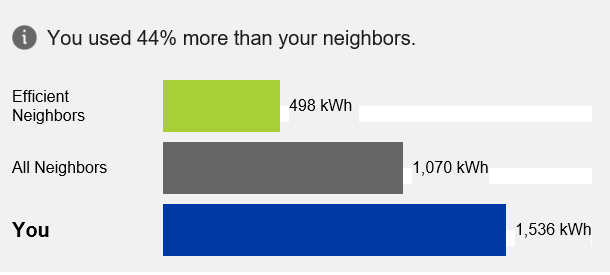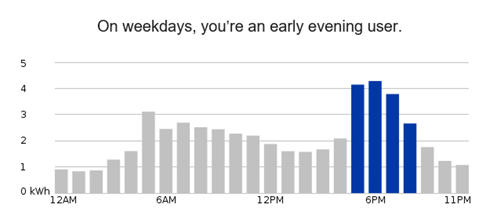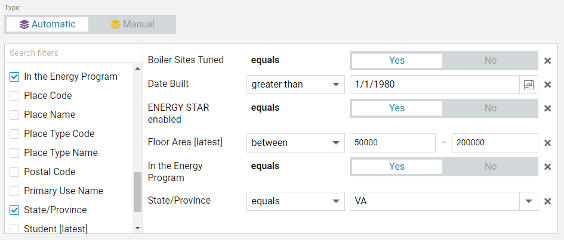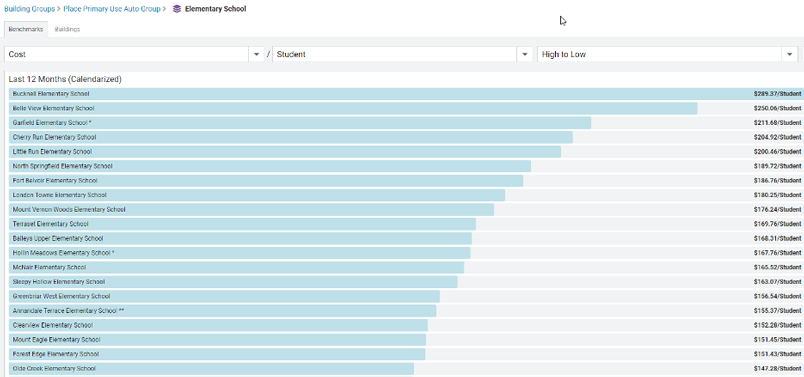Benchmarking…we hear a lot about the importance and value of building energy performance benchmarks, yet the actual experience of many building owners is something much less. Is benchmarking worth it? Does benchmarking provide valuable insights that lead to cost and energy reductions? I’ve observed two common problems with popular benchmarking methods.
Here’s a personal example of Problem #1—inappropriate peer groups. My electric provider, at what I have to assume is considerable expense levied on its customers, provides a residential benchmarking report every month. As you can see, my house is one of the worst performers in a one-mile radius, implying that I’d do well to make a large investment in upgrading my electricity-consuming equipment or hire an expert to perform an energy audit. The report even shows my high use hours, 5 pm to 8 pm. I can’t figure out what I’m doing wrong. I get home from the office, plug in my 15 kWh hybrid car, and…


Therein lies the problem with benchmarking based on inappropriate peer groups, be it residential, commercial, government, education, or industrial. My peer group should be “two-person residences with plug-in hybrids.” Anything else is meaningless.
We’ve added powerful functionality to EnergyCAP to allow you to create building benchmark peer groups based on any and all relevant factors. Create as many peer groups as you need and use the setup wizard to establish filters for automatic maintenance of the group. You can even create Custom Fields and base your peer groups on them, for example “Number of electric vehicle charging stations.”

Benchmarking Problem #2 is the “normalizing factor,” or what you might call the “per” factor. In my residential example, the normalizing factor is “per household.” An improvement to that could be “per resident” or better yet, “per kW of installed load.”
In the non-residential world of benchmarking, the most common EUI (Energy Use Intensity) normalizing factor is building floor area—per square foot. We’ve all seen this in popular ENERGY STAR scores and reports. But is that relevant in all cases? Unfortunately, no, and in many cases, it is particularly irrelevant and useless. Following are a few examples of normalizing factors that may be more relevant to building owners in certain sectors:
Education: Number of students
Apartment complex: Number of occupied units
Lodging: Guest nights
Restaurant: Meals served
Manufacturing: Units produced
Water authority: Gallons pumped
EnergyCAP allows you to create and track Custom Benchmark factors. Below is an example of a school district benchmark chart in utilities cost per student.

If your benchmarking method isn’t adding valuable actionable energy management intelligence, it may be a great time to contact us and explore the many benefits of EnergyCAP or download our eBook, “Effective Energy Benchmarking.”
 Best-in-class portfolio-level energy and utility bill data management and reporting.
Best-in-class portfolio-level energy and utility bill data management and reporting.
 Real-time energy and sustainability analytics for high-performance, net-zero buildings.
Real-time energy and sustainability analytics for high-performance, net-zero buildings.
 A holistic view of financial-grade scope 1, 2, and 3 carbon emissions data across your entire business.
A holistic view of financial-grade scope 1, 2, and 3 carbon emissions data across your entire business.
 Energy and sustainability benchmarking compliance software designed for utilities.
Energy and sustainability benchmarking compliance software designed for utilities.






